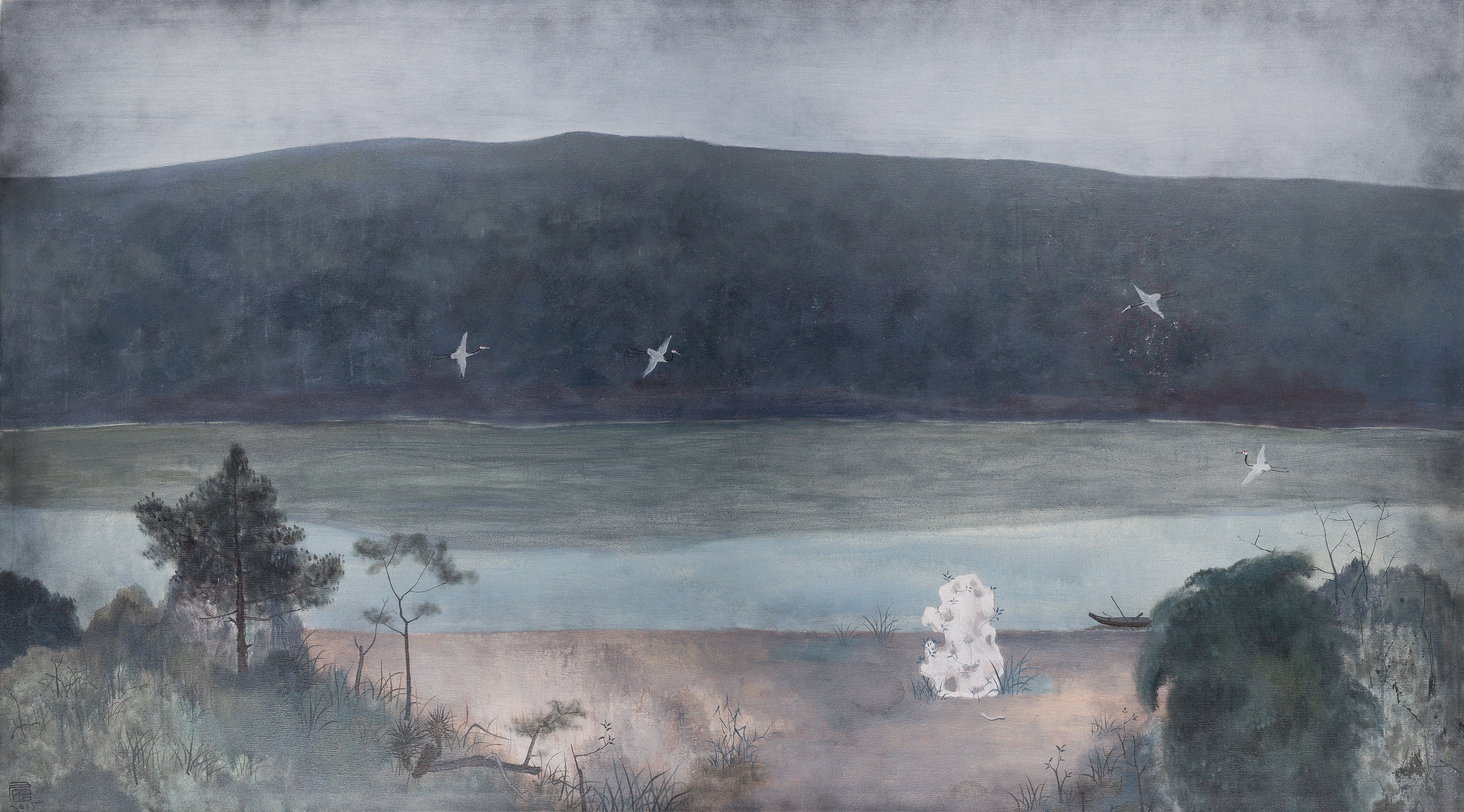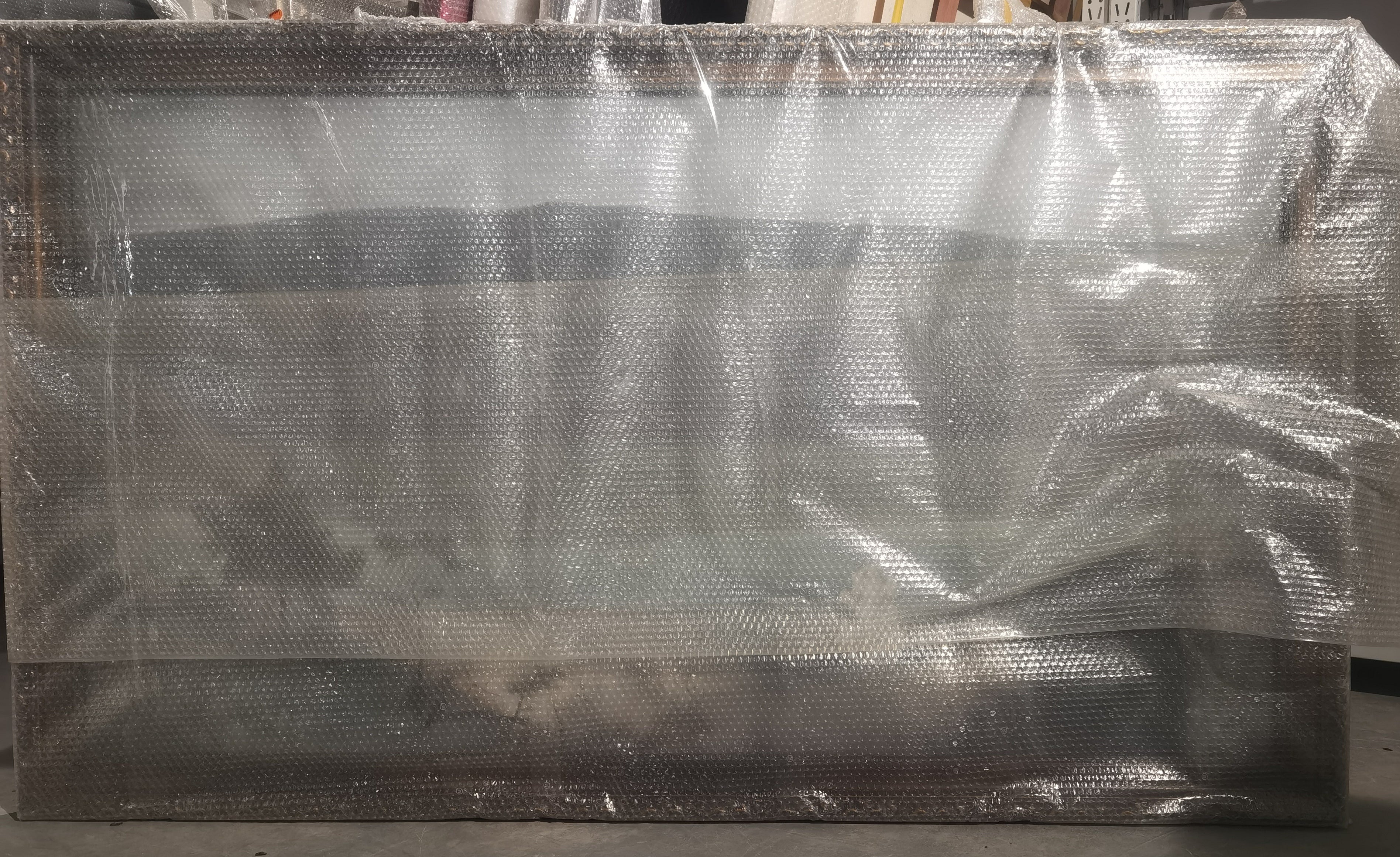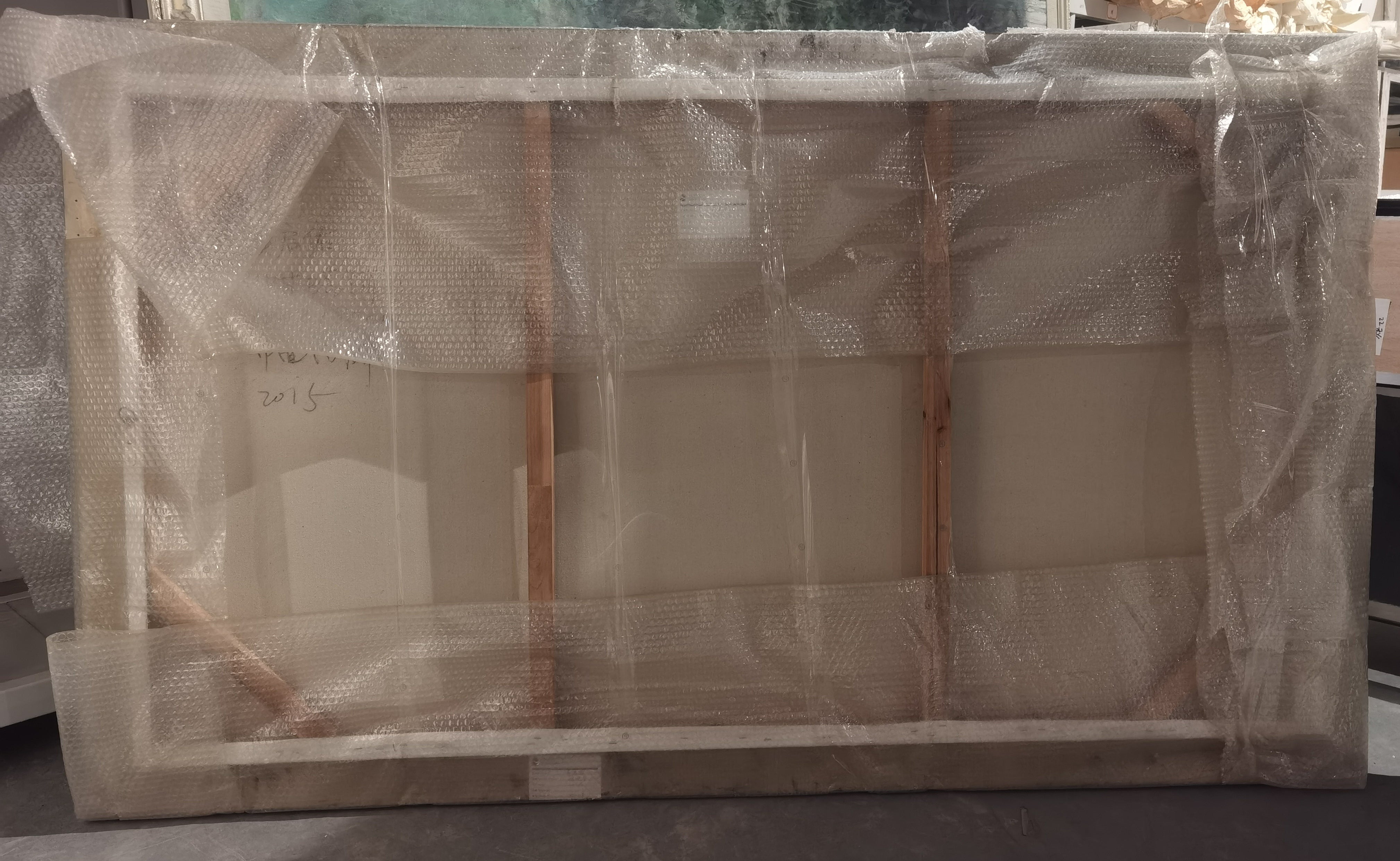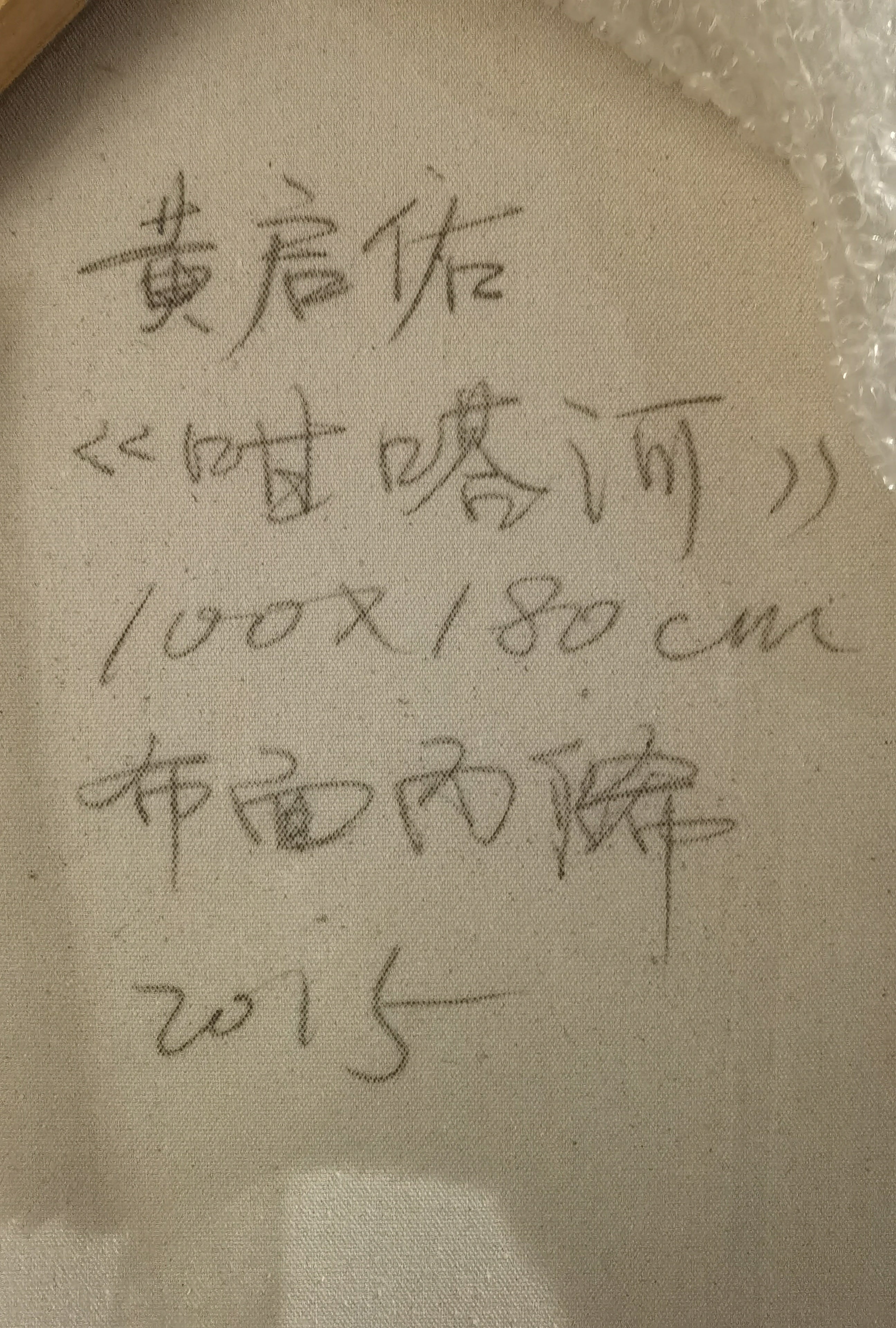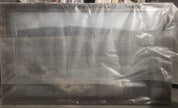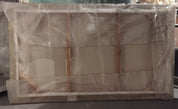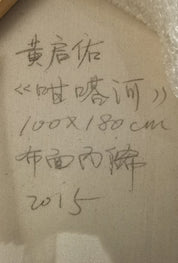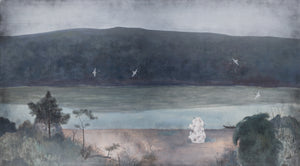Shixi River (or River of Time’s Glow 时曦河)
Qiyou Huang
Artwork Details
Artwork Description
Title: Shixi River (or River of Time’s Glow 时曦河)
Artist: Qiyou Huang (黄启佑)
Date: 2015
Medium: Acrylic on canvas
Dimensions: 100 x 180 cm
Artwork Identification:
Shixi River is an atmospheric landscape painting by Chinese artist Qiyou Huang. Rendered in soft acrylic washes, the composition depicts a quiet riverbank under a brooding sky, framed by sparse vegetation and distant hills. A few delicate cranes drift through the sky, while a scholar’s rock—a recurring motif in Huang’s oeuvre—stands like a sentinel on the shore. Subtle tonal gradients create a sense of gentle melancholy, immersing the viewer in a dreamlike terrain.
Artistic Style and Influences:
Huang’s work navigates between classical Chinese landscape traditions and Western Romantic sensibilities. The minimalist approach, quiet tonal palette, and symbolic rock and crane imagery reflect Song Dynasty aesthetics. At the same time, the painting evokes a Romantic fascination with solitude and the sublime. The blend of sparse realism and metaphysical ambience speaks to the fleeting nature of memory and existence.
Historical Context:
Painted in 2015, Shixi River exemplifies Huang’s ongoing inquiry into time, memory, and ruin. The Title:, “River of Time’s Glow,” poetically references the passage of time and the faded aura it leaves behind. In a rapidly transforming society, Huang’s landscapes act as meditative spaces, evoking cultural fragments and emotional residues of an idealized past. His visual language bridges temporal divides, from ancient Chinese scrolls to modern conceptualism.
Provenance:
Provenance documentation can be provided upon contact.
Condition and Conservation:
Artwork in very good condition. The surface is stable and intact, with no visible signs of deterioration or damage.
Artistic Significance:
Shixi River highlights Qiyou Huang’s refined mastery in crafting evocative, introspective landscapes. Through his delicate handling of space, color, and symbolism, the artist invites a quiet reflection on transience and the spectral presence of history. This painting stands as a significant work in his exploration of the poetics of ruin and the spiritual dimensions of landscape art in contemporary practice.

